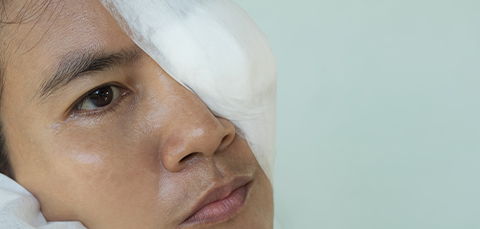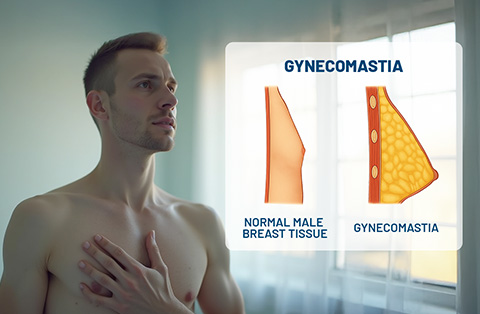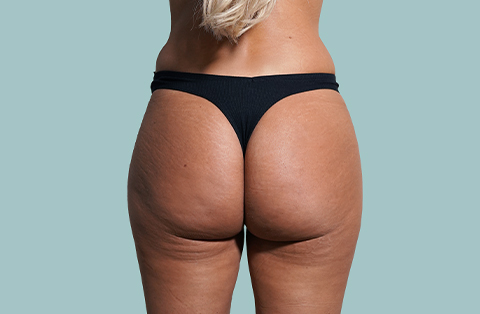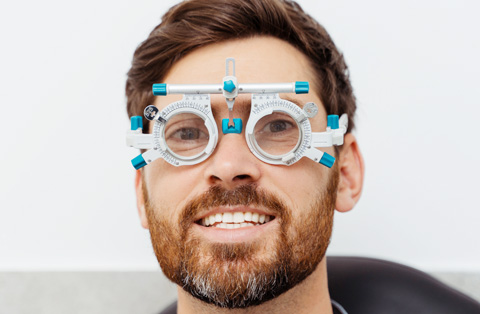Struggling with dry eyes and worried about vision loss? Learn how to prevent damage, protect your eyesight, and find effective treatment options before complications arise.
Dry eye syndrome is a common eye condition where your eyes don’t make enough quality tears to stay healthy and comfortable.
It matters because dry eye affects millions worldwide, and in severe untreated cases, it can lead to corneal damage and even permanent vision loss. Studies estimate up to 50% of adults may experience symptoms.
In this article, we’ll explain whether dry eye can cause blindness, outline its symptoms and long-term effects, and explore treatment options and prevention strategies to protect your vision.
What is Dry Eye Syndrome?
Dry eye syndrome is a chronic condition where the eyes do not produce enough tears or the tears evaporate too quickly. Tears protect the eye surface, supply nutrients, and help maintain clear vision. When this balance is disturbed, the eyes become dry, irritated, and prone to damage.
The condition is classified as a multifactorial eye disease. It involves problems with the tear film, which has three main layers: oil, water, and mucus. Deficiency in any of these layers can destabilize the tear film, causing discomfort and visual disturbances.
Dry eye syndrome is common, particularly in older adults and women. Risk increases with age, hormonal changes, environmental stressors, and systemic diseases. Although often viewed as minor, persistent dryness is a medical concern because it can progress to serious complications if left untreated.
What are the symptoms of dry eye?
Dry eye symptoms often affect both comfort and vision. The most common signs include:
Burning, stinging, or scratchy sensation in the eyes
A feeling of grit or sand in the eye
Redness and irritation, especially after screen use or reading
Blurred vision that improves with blinking
Sensitivity to light (photophobia)
Watery eyes, caused by reflex tearing in response to dryness
Difficulty wearing contact lenses
Symptoms can vary in severity. Some people experience mild discomfort, while others develop persistent irritation and visual problems that interfere with daily tasks. Chronic dry eye can fluctuate during the day, often worsening in dry or windy environments.
Can Dry Eye Syndrome Cause Blindness?
Dry eye syndrome does not usually lead to blindness, but severe or untreated cases can cause vision loss. When the tear film is unstable, the cornea loses its natural protection. This exposes the eye surface to inflammation, scarring, and infection. Over time, these changes can damage the cornea, which is essential for clear vision.
The risk of blindness arises when chronic dry eye remains untreated. Persistent dryness can trigger corneal ulcers or thinning, both of which can leave permanent scars. In advanced cases, this scarring disrupts light entry into the eye and may cause irreversible vision loss.
While most patients with dry eye experience discomfort rather than blindness, the condition should never be ignored. Early recognition and proper management significantly reduce the risk of serious complications.
What are the long-term effects of dry eye?
Chronic dry eye does more than cause daily irritation. Over time, it can create structural and functional changes in the eye that impact vision and comfort.
Corneal damage: Persistent dryness can weaken the corneal surface, leading to abrasions, ulcers, or scarring. These injuries reduce corneal clarity and may permanently affect vision.
Inflammation: Ongoing tear film instability drives chronic inflammation. This damages epithelial cells, worsens symptoms, and makes the eye more vulnerable to infection.
Visual disturbances: Patients may experience fluctuating or blurred vision due to irregular tear film. This interferes with reading, driving, and screen use.
Reduced quality of life: Chronic dry eye often limits daily activities, increases fatigue, and lowers productivity. The constant discomfort can also affect mood and sleep.
Higher risk of complications: Untreated dry eye increases the chance of secondary problems like keratitis, recurrent infections, and in rare cases, vision loss.
Long-term effects develop gradually. While most patients do not become blind, ignoring persistent symptoms allows damage to accumulate and raises the risk of serious outcomes.
Can severe dry eye cause permanent damage?
Yes. Severe dry eye can cause permanent damage when the protective tear film is disrupted for long periods. Without sufficient lubrication, the cornea becomes exposed to friction, inflammation, and infection.
Over time, this can lead to:
Corneal scarring: Scar tissue forms when repeated injury or ulcers heal poorly. Scarring blocks light from entering the eye clearly and may cause lasting vision loss.
Thinning of the cornea: Severe dryness can trigger corneal melting (keratolysis), a condition where tissue breaks down and weakens the cornea’s structure.
Persistent blurred vision: Even if pain improves, structural changes to the corneal surface can leave permanent irregularities, resulting in distorted or reduced vision.
Higher infection risk: The natural defenses of the eye weaken, increasing the chance of bacterial or fungal keratitis, which may leave permanent damage after healing.
While permanent damage is less common, it usually occurs when severe dry eye remains untreated. Early diagnosis and consistent management are key to preventing irreversible outcomes.
What kind of vision issues does dry eye cause?
Dry eye affects vision by disrupting the stability of the tear film, which is essential for a smooth optical surface. When the tear film breaks down, light scatters instead of focusing properly, leading to a range of visual disturbances.
Common vision problems linked to dry eye include:
Blurry vision with dry eyes: Clarity often worsens between blinks and improves briefly after blinking.
Difficulty focusing: Sustained tasks such as reading or computer use become harder because the eyes dry out over time.
Glare and halos: Irregular tear film causes light scatter, producing glare from headlights or halos around lights at night.
Reduced contrast sensitivity: Patients may struggle to distinguish objects from their background, especially in low light.
Double vision (monocular diplopia): Severe surface irregularities can make a single eye see overlapping or shadowed images.
These vision changes may be temporary in mild cases but can become persistent if the corneal surface is damaged. The effects interfere with daily activities like driving, using screens, or reading, making dry eye more than a comfort issue.
How is the treatment for dry eye syndrome?
Treatment options for dry eye syndrome focuses on restoring tear film stability, protecting the ocular surface, and relieving symptoms. The approach depends on severity and underlying causes.
Main treatment strategies include:
Artificial tears and lubricating ointments: First-line therapy to replace or supplement natural tears.
Anti-inflammatory eye drops: Medications like cyclosporine or lifitegrast reduce ocular surface inflammation and improve tear production.
Punctal plugs: Tiny devices placed in tear ducts to slow tear drainage and keep moisture on the eye longer.
Warm compresses and eyelid hygiene: Useful for meibomian gland dysfunction, a common contributor to evaporative dry eye.
Moisture-preserving methods: Humidifiers, protective eyewear, and reducing screen time help minimize tear evaporation.
Treating systemic conditions: Managing diseases such as rheumatoid arthritis or diabetes supports long-term eye health.
For chronic or severe dry eye, advanced options include serum eye drops made from the patient’s blood plasma or even surgical interventions in rare cases.
Early and consistent treatment not only improves comfort but also prevents complications such as corneal scarring or vision loss.
When should I see an eye doctor?
You should see an eye doctor if dry eye symptoms are frequent, worsening, or interfere with daily life. Occasional dryness is common, but persistent irritation can signal a more serious problem.
Seek medical evaluation if you notice:
Constant dryness, burning, or stinging that does not improve with over-the-counter eye drops.
Blurred or fluctuating vision that affects reading, driving, or screen use.
Excessive tearing that alternates with periods of dryness.
Eye pain, redness, or sensitivity to light that continues for days.
Signs of infection such as discharge, swelling, or sudden worsening of symptoms.
Immediate medical care is needed if vision suddenly decreases, or if you suspect corneal injury or ulcer. Regular check-ups are also important if you have chronic dry eye disease, autoimmune conditions, or a history of eye surgery, since these raise the risk of complications.
Frequently Asked Questions
How long does it take for dry eyes to cause blindness?
Dry eyes rarely cause blindness, and when it happens, it develops slowly over years. Severe untreated cases can lead to corneal scarring or ulcers that damage vision permanently. With proper treatment, progression to blindness is highly uncommon, making timely medical care the key to preventing long-term complications.
Can vision loss from dry eyes be reversed?
Mild vision changes from dry eyes, such as blurriness or glare, often improve once the tear film is stabilized with treatment. However, if severe dry eye causes corneal scarring or ulcers, vision loss may be permanent. Early diagnosis and management are crucial to prevent irreversible damage and protect eyesight.
What does vision look like with a dry eye?
Vision with dry eye often appears blurred, fluctuating, or hazy, especially after prolonged reading or screen use. Some people notice glare, halos, or double images, particularly at night. These changes improve briefly after blinking but return as the tear film breaks down, making sight unstable and less sharp throughout the day.





